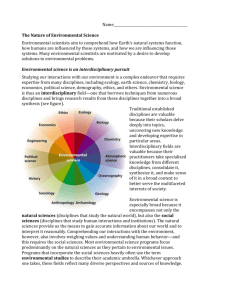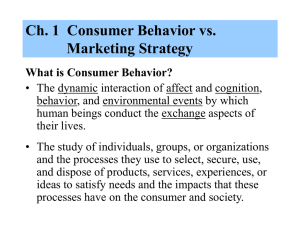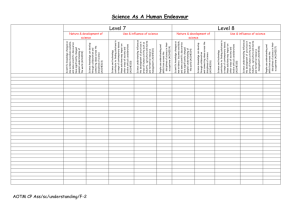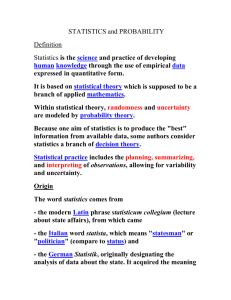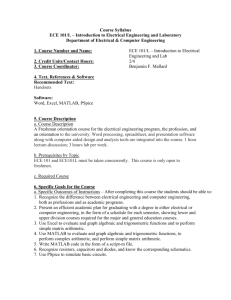Working interdisciplinarily_C.Kearns
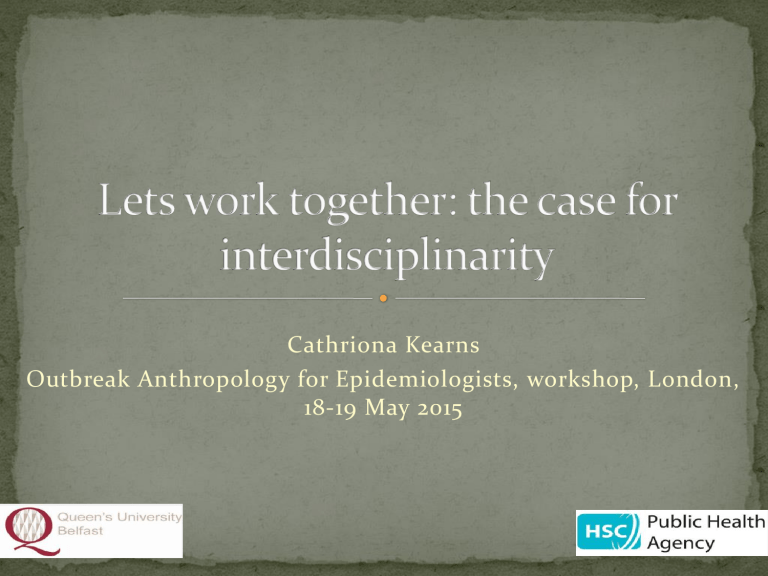
Cathriona Kearns
Outbreak Anthropology for Epidemiologists, workshop, London,
18-19 May 2015
Interdisciplinary
Multi disciplinary
Transdisciplinary
ARRRR......
Sorting out the terminology
Multidisciplinary:
• A number of disciplines
• Tends to remain discipline-orientated-silos
• Report back on their discipline
• Engagement with other disciplines can be limited
Interdisciplinary:
• A number of disciplines
• Active collaboration between disciplines
• Component boundaries broken down
• Not just a summation of the different disciplines/parts
• Synthesising the disciplines into something new- a co-ordinated holistic
Transdisciplinary:
A number of disciplines –often includes society
Development of shared concept cross-over between disciplines, can form a new approach
Boundaries between interdisciplinarity and transdisciplinarity can be fuzzy
Single disciplines feed into & provide the basis for Interdisciplinary approaches
Team leader = facilitates interactions among team members by conversing with the different disciplines.
Team members = develop a working knowledge of each others area of expertise, therefore expanding their understanding of other fields while contributing their own expertise
Challenges and barriers working with different disciplines
• Accept that differences exist – we all come at things in a different way
Fish is Fish: an interdisciplinary parable ( Leo Leonni, 1974)
• Disciplines are governed by scope (boundaries, norms)
• Differing methodologies for research:
• Epidemiology: quantitative, statistical models, vital indicators of distribution of disease patterns
(X) social relations way of life, behaviour, knowledge of individuals , generalisation
• Anthropology: qualitative accounts for the socio-cultural context
(X) descriptive, subjective, not reflective due to small numbers studied, disregard principle statistical inferences
Additional barriers to consider...........
• Disciplinary hierarchy (epistemic dominance)
• Language – disciplines can have different terminologies and sometimes terms can mean different things to different people
• Privileging- gender, looks race, height, beauty
• Topic status- scientific and technical topics given more attention that the social or cultural factors
• As a team we can create problems none of us could cause as individuals but we can also create solutions that would not be reached on our own
Not so different...... A good marriage
Epidemiology:
“study of the distribution and determinants of disease “ (Trostle et al., 1996)
The cause and effect can be affected by many factors:- biological, social, cultural, environmental.... These factors are taken into consideration by anthropologists
Anthropology:
Anthropology can benefit from epidemiology – provision of insights into patterns of Illness across different communities/cultures
It goes beyond statistical reasons- can be difficult to understand why cholera rates remaining high on epi- curves until e.g. water treatment tablets for cholera are not been used- community thinks chemical poisons
The power of anecdotal evidence
Edward Jenner 1749-1823
Considering Lay epidemiology
Lay theories of health often do not match professional views
Early studies that introduced lay beliefs about health are to be found in social anthropology. First ethnographies - Rivers,1924;
Clements,1932; Ackerknecht,1942.
Scientific dominance obviated the need to explore lay beliefs
Popay and Williams (1996) – ‘ignoring the lay voice is foolhardy -it can offer untold insights into the experience of health and illness’.
Lay epidemiology: is a term used to describe the processes through which lay individuals understand and interpret health risks .
The lay epidemiology model suggests: the lay public draws on knowledge and experience to develop a sophisticated system of beliefs that,while mindful of health education messages, are set within the context of experience and, are evidence based.
This evidence may be gathered from family, community, or societal events and each event will impact on beliefs to varying degrees.
“Build on local and cultural narratives: Diseases may be present in the population who have learned how to ‘live’ with them. Incorporation of local cultural logics and social protocols into response strategies e.g. Haemorrhagic fevers-Uganda the ‘gemo’ notion and local
isolation procedures” ( M. leachSTEPS,2010)
Causal web- web of determinants
Summary
Endogenous & exogenous factors: e.g. Genetics/lifestyle/social/cultural
Nexus relationships – behaviours (individual and/or community)
Epidemiologist aim to identify and measure the important factors in this web
Anthropologist focuses on the social and cultural correlates of behaviours in the web
The synergy of the anthropologist and the epidemiologist – explores the nexus
Principal barrier - divergence away from standard methodology thinking
Epidemiologist: to understand the complex nature of human behaviour – challenge to capture this quantifiably.- look out for ‘paralysis through analysis’
Anthropologists : to see the benefit in the models used to identify patterns and trends

